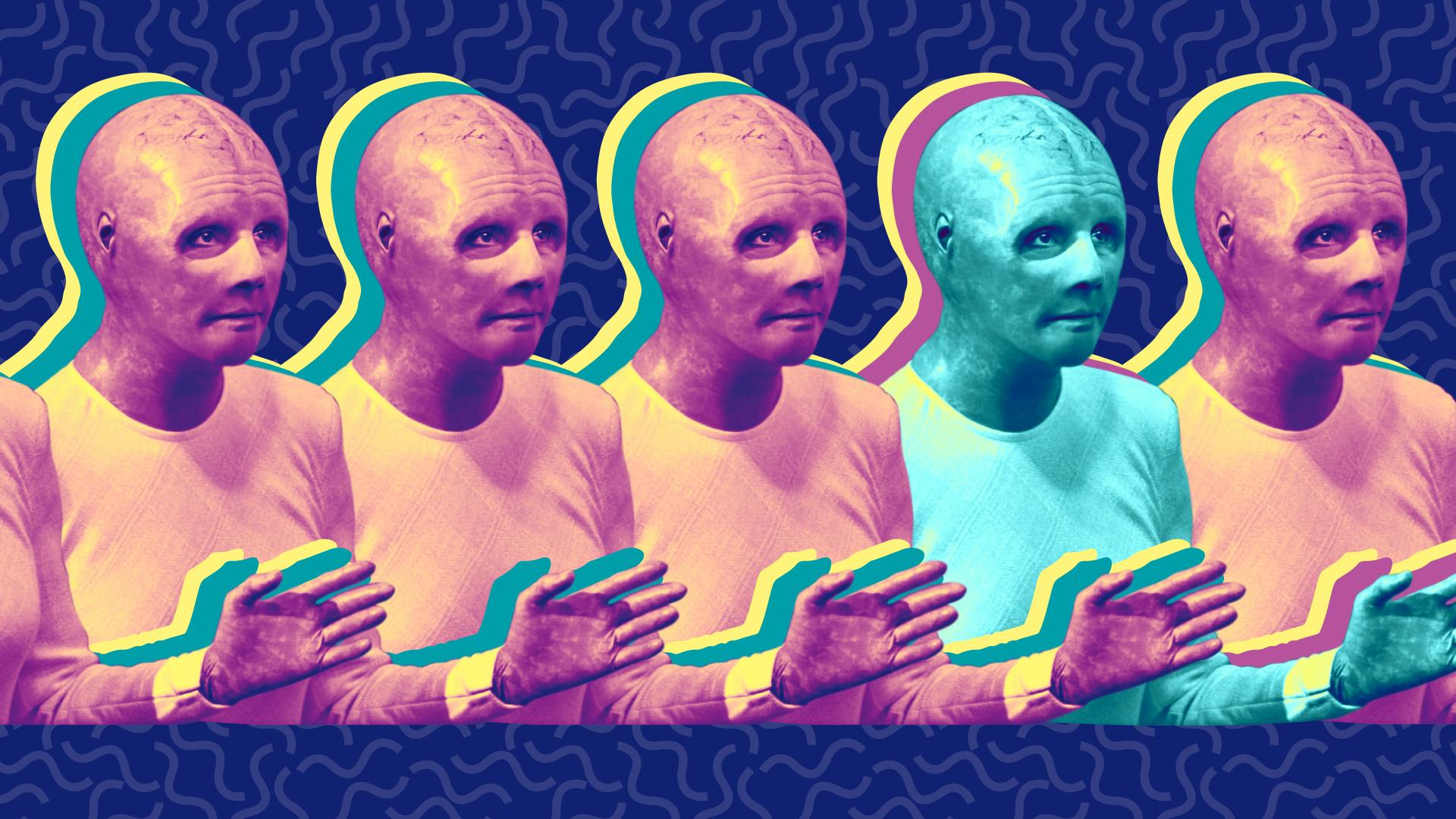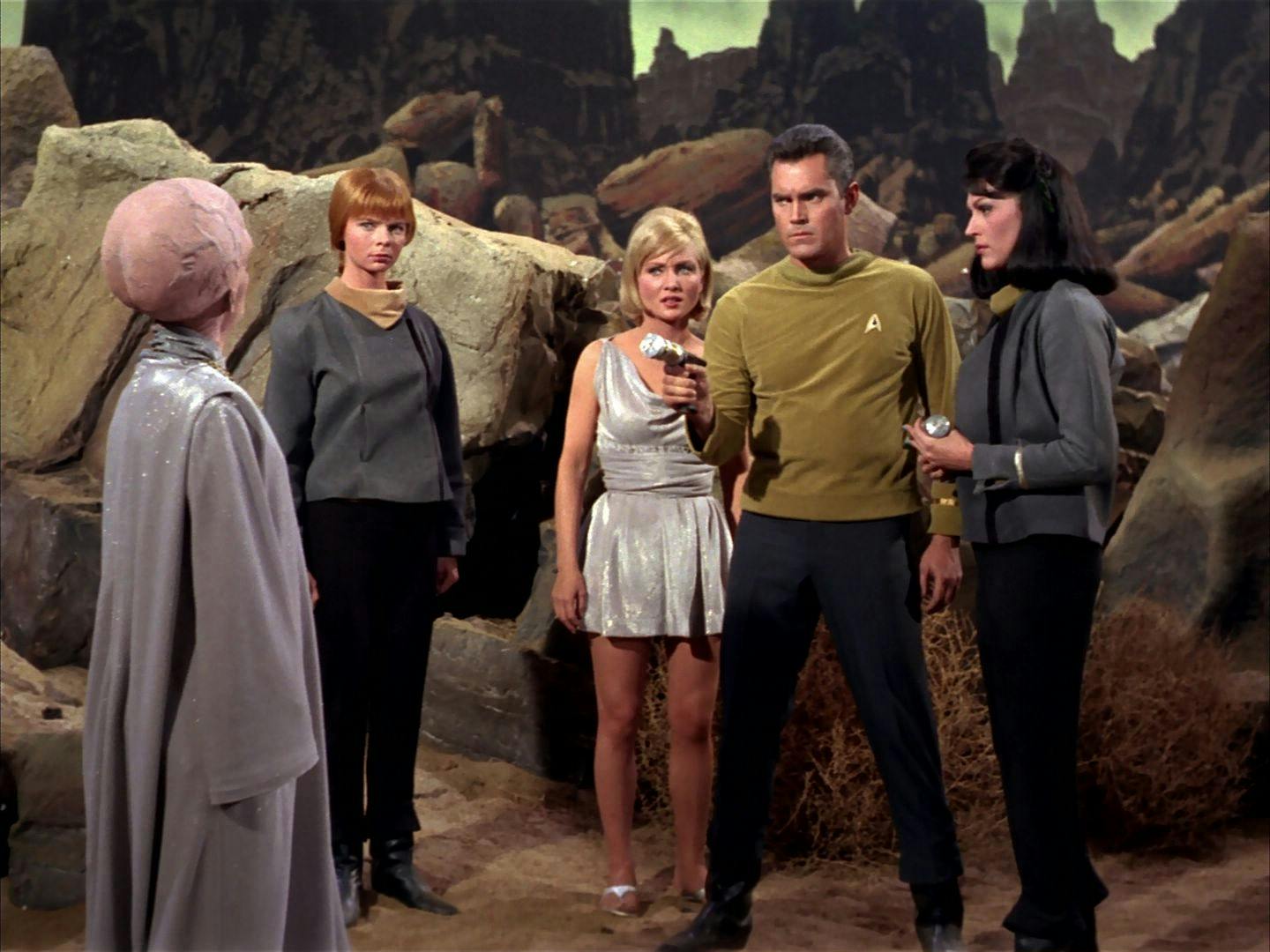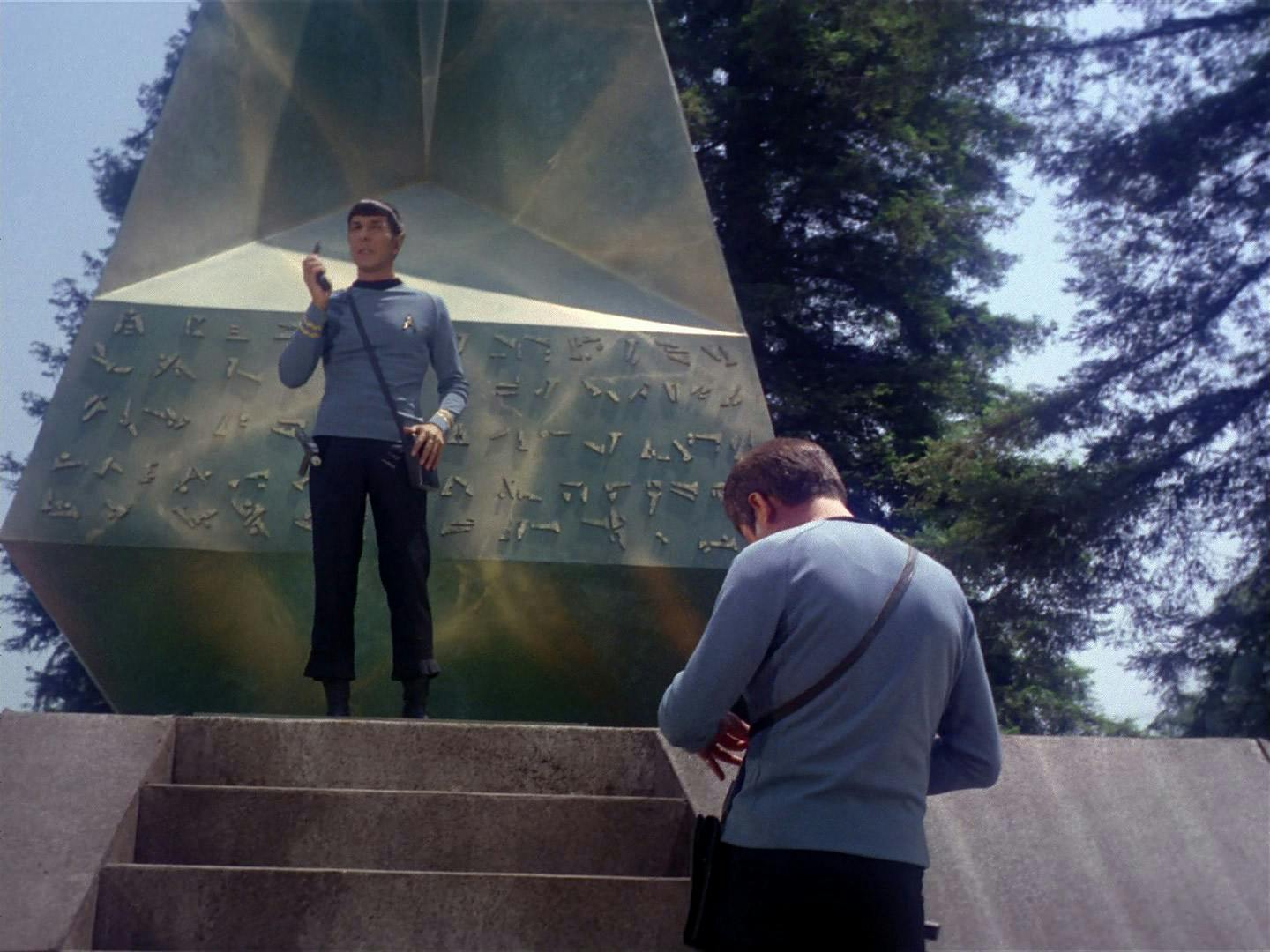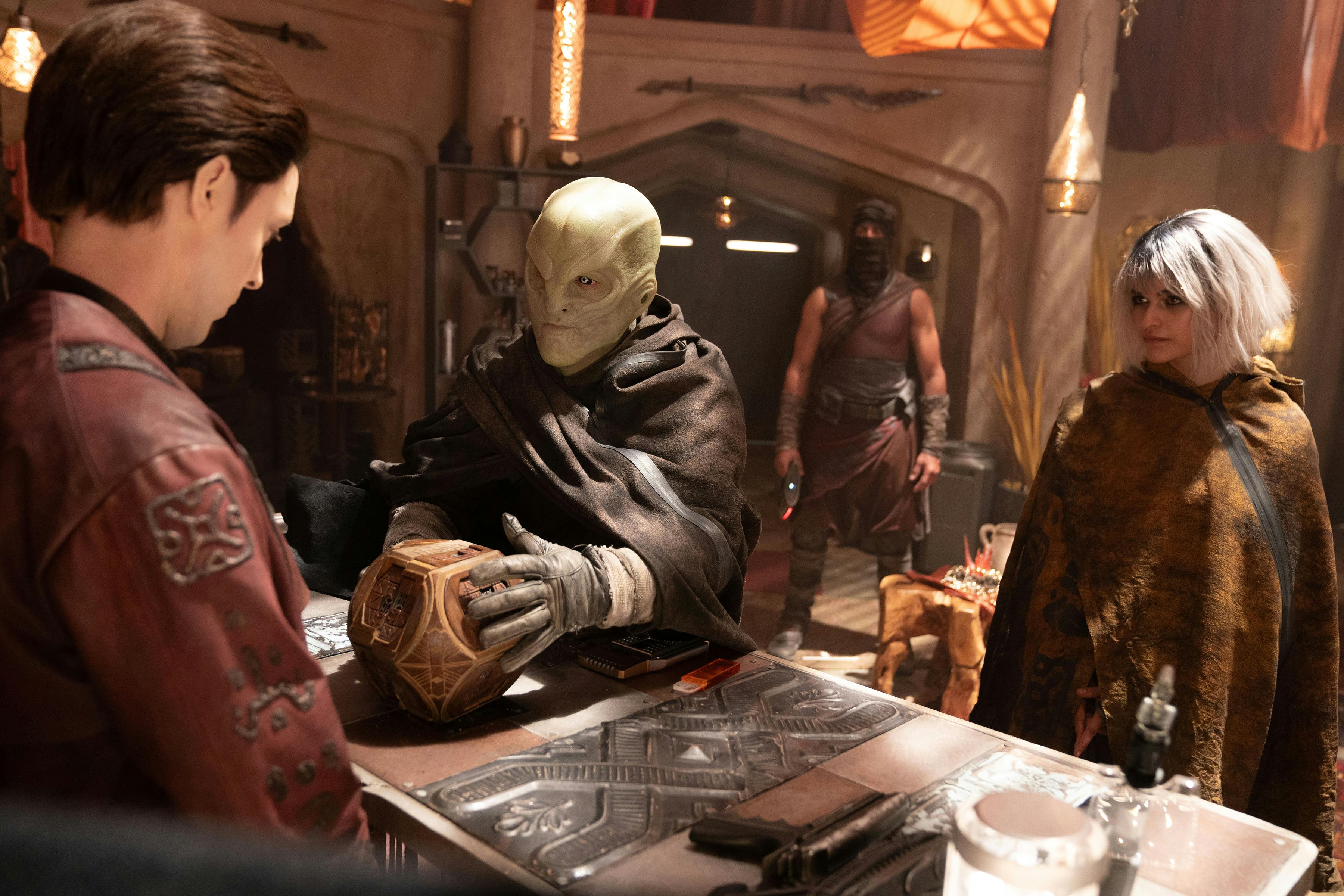Published Apr 10, 2024
A Brief History of the Progenitors in Star Trek
They designed life itself!
SPOILER WARNING: This article contains story details and plot points for Star Trek: Discovery's "Red Directive."

StarTrek.com
Captain Burnham's top-secret mission in the final season of has finally been revealed. But this time, the Discovery crew isn’t stopping a future-destroying A.I., or a lethal, extra-galactic force. Instead, they’re investigating the basic mysteries of why most species in the Star Trek universe look vaguely human.
As revealed in "," the search for technology used by ancient "Progenitors" sets-up a massive treasure hunt for the season. But, who are the Progenitors? What did Jean-Luc Picard know about the secrets of inter-species alien DNA? And how does all of this fit in with Gene Roddenberry’s earliest ideas for Star Trek?
Here’s a brief history of the Progenitors, from the early 1960s, to the 24th Century, all the way to 2024, and the 31st Century.
The Real World-Origins of the Progenitors

"The Cage"
StarTrek.com
When the U.S.S. Enterprise first set out to seek out "new life and new civilizations," a huge swath of those alien lifeforms turned out to look a lot like human beings. And the primary reason for that, at least behind-the-scenes, was two-fold.
First, human actors are more affordable, and second, Gene Roddenberry wanted the classic Star Trek to avoid the sci-fi trope of "Bug-Eyed Monsters." And so, in one of the original 1964 pitch documents for Star Trek, Roddenberry floated the idea of "The Parallel Worlds" concept. The idea was that the format of Star Trek — from a writing and production standpoint — would generally deal with "...plant and animal life, plus people, quite similar to Earth. Social evolution will also have interesting points of similarity with ours."
Unlike a huge swath of science fiction on TV at the time, the promise of strange, new worlds, that were, in fact, populated by people, is something that set Star Trek apart, and was the cornerstone of what gave the series its humanist angle. But, the side effect of course, was an in-universe question — why were so many aliens humanoid?
The Old Ones, Sargon, and The Preservers

"The Paradise Syndrome"
StarTrek.com
The first two seasons of are sprinkled with hints that, in the distant past, the galaxy was visited by super-powered aliens with technology far more advanced than anything in the Federation.
In "," we meet Ruk, an android built by "The Old Ones," an alien race capable of creating humanoid androids that were basically immortal. In "," the disembodied soul of Sargon, refers to humanity as "my children." While Dr. Muhuall says this idea flies in the face of evolutionary theory, Spock mentions the idea that aliens seeded life would "explain certain elements of Vulcan pre-history."
Then in Season 3, in "," Bones and Spock tackle the question head-on. When they realize an ancient race of "Preservers" helped various humanoid species throughout the galaxy, the idea of an ancient alien race guiding and "seeding" a ton of humanoid species became less of a myth and more of a working theory. "I’ve always wondered why there were so many humanoids scattered through the galaxy," Bones says. To which Spock replies, "So have I. Apparently, the Preservers account for a number of them."
And then, the questions about an ancient humanoid species went answered. At least, until .
The Chase

"The Chase"
StarTrek.com
Directed by Jonathan Frakes and written by Ronald D. Moore and Joe Menosky, "" was a sixth-season episode of The Next Generation, which, according to The Next Generation Companion, was considered in the writers' room the most "Roddenberryesque" episode of TNG at that time. The story itself took cues from Carl Sagan's novel Contact, and posited that yes, ancient aliens not only seeded most of the humanoid species, but also hid a message in the DNA of all those species.
Captain Picard's interest in archeology comes in handy during the quest to locate all the DNA strands and reveal the message, which was also represented metaphorically by the ancient artifact known as the Kurlan naiskos.

"The Chase"
StarTrek.com
At the end of the episode, representatives from the Klingon Empire, the Romulan Empire, the Cardassian Union, and the Federation, all witness the truth — an ancient Progenitor (played by Salome Jens) makes it clear that all the humanoid species in the galaxy don’t exist out of pure hubris, but instead, out of a kind of desire for legacy. "You are a monument, not to our greatness, but to our existence…. Remember us."
Ronald D. Moore pointed out that there's no reason to believe that the Progenitors from "The Chase" and the Preservers from TOS aren't one in the same. Though not explicitly stated in the script, he said, "But this could be them, and be internally consistent."
Discovery Brings It All Home

"Red Directive"
StarTrek.com
While The Next Generation established a canonical fact that TOS only danced around, that only answered the question of why. With Discovery Season 5, a stranger, and more complex question is getting broached — how?
"The Chase" told us why there are so many humanoid species in the galaxy, but we had no idea how the Progenitors specifically pushed life to evolve on various planets toward the exact form of life we’re all so familiar with. As the crew of Discovery — and other forces — are in pursuit of this ancient tech, Star Trek is boldly speculating on one of the biggest questions of all time.
If there was a supreme intelligence behind the creation of life, what was their method? While these kinds of questions are somewhat mind-boggling in real life, what Discovery is doing now is what Star Trek has done all along: Ask provocative questions that are beyond what we know now, so that maybe, in the future, we’ll be better prepared.
We don’t know that the Progenitors exist in real science, but the "panspermia hypothesis," is a very real scientific concept. A friendly alien may not have consciously sparked life on Earth eons ago, but, in reality, it is possible that some building blocks for life itself may have come from the stars.





